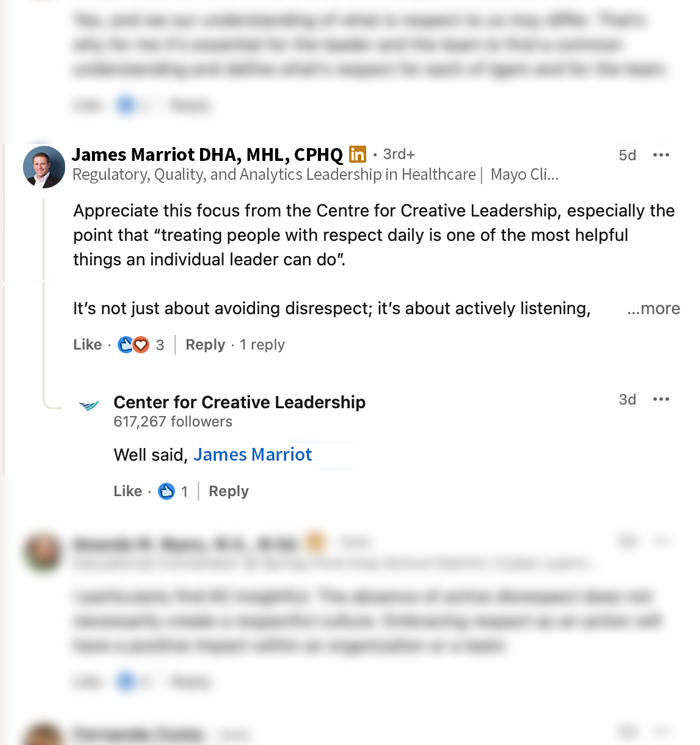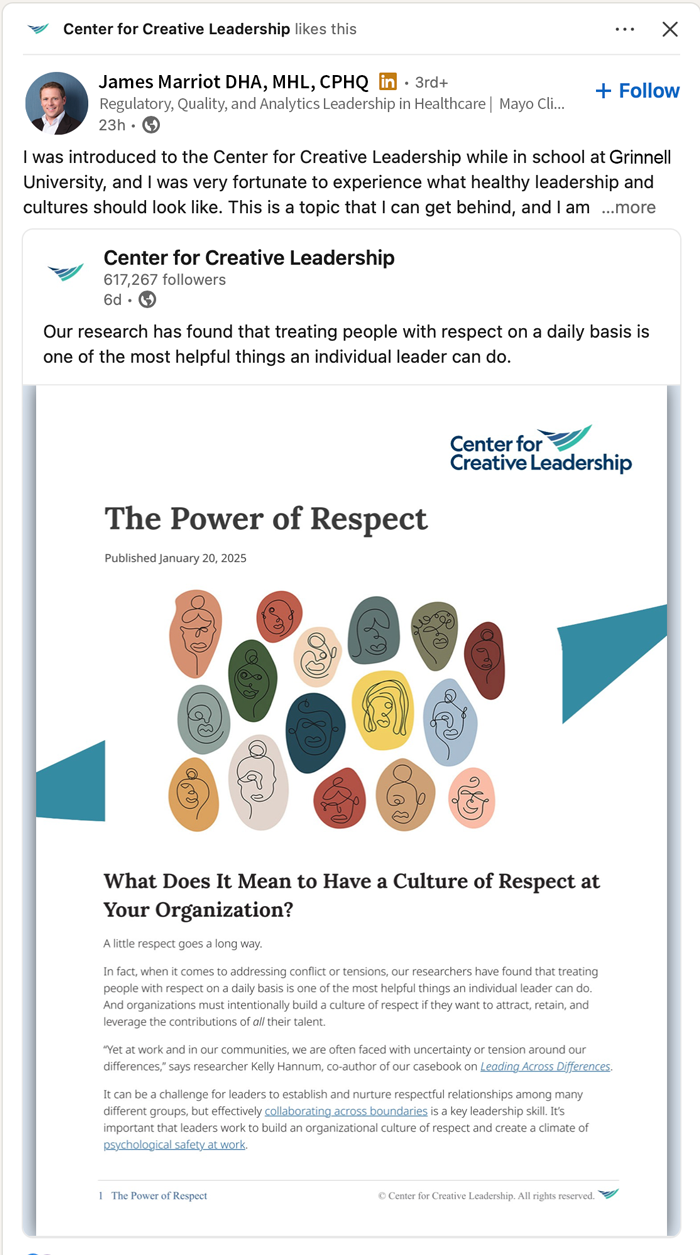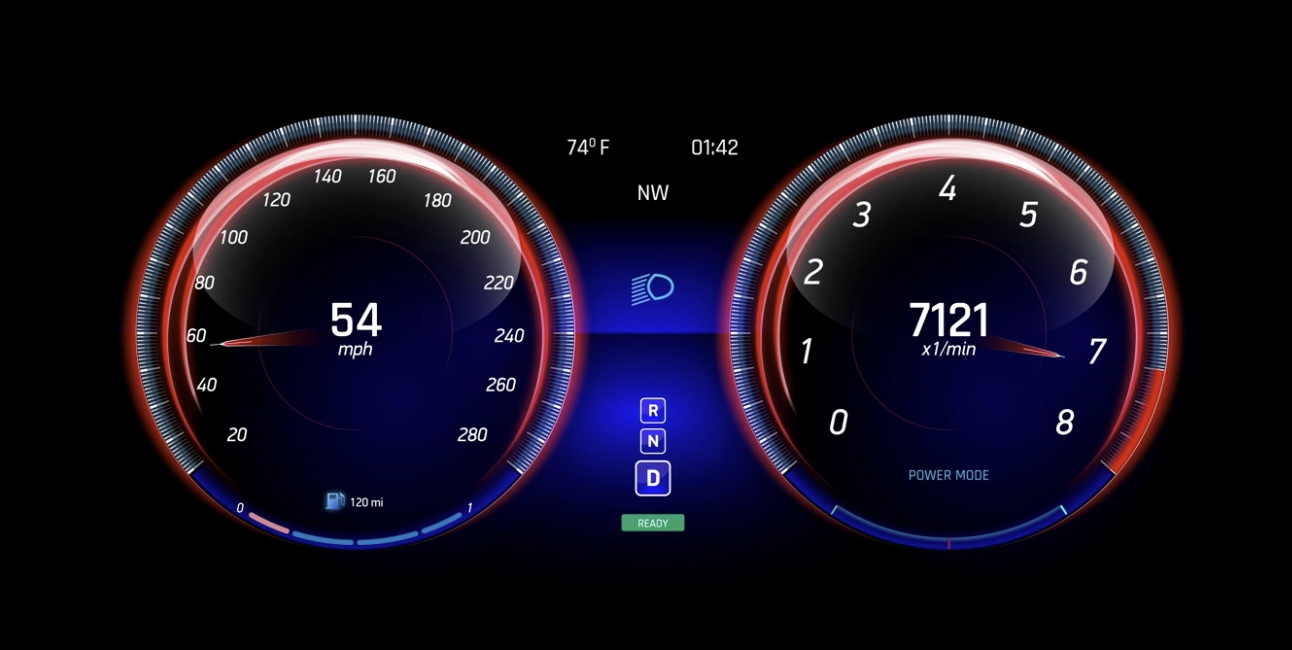
LinkedIn, the popular business networking social media site, boasts over 1 billion users worldwide. An estimated 300 million people log in daily. With such exponential reach, business owners would be wise to make the most of the powerful platform. Yet many are making simple mistakes that limit their visibility and appeal to fellow businesspeople. In this article, we’ll share with you five simple tips to improve your LinkedIn profile. Plus, Dashboard’s social media expert, Robyn, will share her special tips to get more from your LinkedIn presence.
Five LinkedIn Tips to Get More Visibility, Connections, and Leads
First, the obvious: If you don’t have a LinkedIn profile, it’s time to set one up. Vist LinkedIn to sign up for the service.
A LinkedIn profile is unique to a person. They are similar to an online resume, with a headline, listing of employment history, education history, and highlights. Users can upload a professional photo of themselves as well as a custom banner to personalize their page messaging.
Businesses set up LinkedIn pages, which offer more features such as About pages, product pages, and help wanted pages that enable them to tailor their communications better to their customers.
This article will focus specifically on personal pages. Why? Personal pages are the easiest and best way to connect and network on LinkedIn. And, they can be optimized for LinkedIn’s search so that customers and connections can find you quickly and easily.
Tip #1: Complete Your Profile
This sounds obvious, but too many people make a half-hearted attempt at completing their LinkedIn profiles. Make sure that every section of your profile is completed, including the headline, the short bio, the about you section, your background, education, and certifications.
Pay special attention to the headline section of your profile. This is what anyone casually browsing your LinkedIn page will see, and it is what will grab their attention. Like the headline of a news article, you want it to stop people in mid-scroll and get them to click on it.
Our very own social media expert, Robyn, provided her tips below:
- Photo: Use a professional-looking photo that accurately represents you, and LinkedIn recommends that about 60% of the image is focused on your headshot.
- Headline: While you technically have 220 characters to work with, it will display best if you keep it concise and under 120 characters. Use keywords relevant to your industry, but avoid buzzwords and jargon. Use action-centered phrasing that highlights what you do and your achievements, for example, “Marketing director helping small businesses increase sales using LinkedIn.”
- About: Don’t leave this blank, we’ll outline more on this below.
- Experience: Link your current and prior job experience to the correct business pages.
- Accomplishments/Skills:
- Show off your credentials, licenses, certifications, achievements, and awards.
- Share publications, notable projects, and whitepapers.
- List at least five of your most relevant skills. These skills should be relevant to those you are looking to build your network with.
Tip #2: Optimize Your Profile for Search
People search LinkedIn for others with whom to connect. They also look for consultants and service providers and may search by industry, service need, or skills. Optimize your LinkedIn profile for such searches. Use keyword phrases in the About section of your profile, including terms related to your skills and industry.
Our tips:
- People looking at your profile will read your About section, use it to tell your story.
- Tie your skills and accomplishments together with why they’d matter to those in the industries you are looking to network with.
- Spend time crafting and revising your profile until you are confident with the final product.
- Have others read it to see if it accurately reflects you.
- Remember, you have 2,600 characters to work with in this section.
Tip #3: Post Regularly
You’d be surprised at how many people have a profile and lament the lack of connections and interactions, yet they never publish a post! It’s like going to a party and standing with your back to the crowd and then wondering why they aren’t speaking to you.
Determine a posting schedule that you can live with, whether that is once a day, once every other day, or so on. Then, decide what to post. A good rule of thumb is that 80% of posts should be about other people—news stories you share, congratulating team members, etc.—and 20% (or less) about yourself. Think about what your customers ask you about. Answers to such questions make great starting posts.
Avoid posting personal updates and content about sensitive or controversial topics. LinkedIn is for business. You’re guaranteed to alienate someone if you post about sensitive or controversial issues such as politics or religion, unless you’re involved in politics or affiliated with a religious organization. Instead, focus on your industry, your business, and your customers, and what they want and need to know.
A regular posting schedule is more important than one dazzling post dropped infrequently. Schedule time on your calendar for daily LinkedIn interactions. Daily 15-30 minute sessions are more than sufficient to begin building your credibility on the platform.
Dashboard recommendations:
- Use LinkedIn’s scheduling feature to preschedule posts with original content about yourself or your business, freeing up your daily time for interaction and connection. One caveat to scheduling posts—make sure you have notifications turned on so you can quickly reply to any comments that others make on your posts within the first few minutes of their comment when possible. LinkedIn algorithms reward quick interaction with comments.
- Test various types of posts to see what content gets the best response from your network. Content types include text-only posts, a graphic with text accompanying it, and a video with text accompanying it. All of these can be scheduled. Be mindful that the types of content the LinkedIn algorithm prioritizes serving are adjusted from time to time.
- Posts can be long and information rich, but have a character limit of 3,000. Make the first few sentences really count. Only the first 200 characters are shown, and a viewer will need to click ‘read more‘ to view the rest of it.
- Test the times you are posting. Although LinkedIn is a business platform, businesses are made up of people, and people spend time on platforms that work in their situation. Test morning versus evening, and weekdays versus weekends. Think about the times you use LinkedIn. Do you look at it while in line at the grocery store, or when relaxing in the evening? Chances are, your network does too.
- Be patient as you build your profile with your content. It can take time for you to find the right rhythm and types of content that resonate with your ideal network.
Tip #4: Interact with Others (But Don’t Spam Them)
Remember the party analogy? It’s vital to interact with people on LinkedIn. That means:
- Sharing their content if it resonates with you and your audience.
- Congratulating them on promotions, work events, or other successes.
- Giving a like or another reaction to their posts.
- Wishing them a happy birthday or congratulating them on a work anniversary.
Whatever you do, don’t spam them. That means do not message people with sales pitches as soon as you connect. That’s like meeting someone at the aforementioned party and offering them an engagement ring before you’ve even asked their name—it’s rushing to a point in the relationship that’s not yet appropriate. Instead, take the time to get to know people first.
There is an old adage in marketing: people need to know, like, and then trust you before they wish to do business with you. Your goal on LinkedIn is for them to know you and then like you. Knowing who you are means building your profile, and liking you comes from liking what you post. Trust is built from consistency over time.
Spending time daily reading and interacting with others’ posts is equally as valuable as posting your original content.
Three types of interactions and their visibility:
1. ‘Endorsing’ a post with a thumbs up or heart emoji
is an interaction that will send a notification to the person who posted it. It will also create another view of that post to your network for a short time, with a small line of text at the top of the post indicating it was a post you ‘liked.’ Although the original person who created the post will see your emoji reaction, it doesn’t offer the lasting value or connection to them that other types of interactions give.

2. ‘Liking’ combined with ‘commenting’ on a post
takes the connection to the person who posted and your visibility to them, a step further. Commenting with your thoughts on the post will be visible to the person posting, and they may respond. Each public reply creates another view of that original post to your network for a short time with a small line of text at the top indicating you commented on the post. Currently you have 1,200 characters to use in your comment. Never sell or promote your services and links in the comments of someone’s post unless invited to do so.

3. The most valuable type of interaction on a post is sharing it to your network, adding your thoughts
to expand or continue the topic and explain why you are sharing it. Adding a personal story about how the content in the post you are sharing makes it even more relevant to your network. This type of interaction with a post creates a new post that is now attached to your profile and will be visible to anyone looking at what you post and share. They see your commentary to attached the post, which helps build a lasting profile of what is important to you. It is also highly visible to the original poster, letting them know your commonalities with them. They may also choose to like or comment on your post, which creates a new view of your post in their network feeds.

Tip #5: Always Personalize Connection Requests
This last tip comes from experience. When building your network and clicking the ‘connection request’ button on LinkedIn, take a few moments to add a personal note. Share why you want to connect. This will help you break through the clutter of connection requests, increasing the likelihood that you will get a ‘yes’ and an acceptance of the request.
Before sending a connection message:
- Look at their profile for shared interests, work experience, skills, activities, or events they attended, as well as mutual connections.
- Review their posts and articles—is there one that particularly resonated with you?
- Be brief—connection request messages are currently limited to 300 characters.
- Use a professional but authentic tone, as if you were speaking to them in person.
- Never sell your product or services in a connection request, it could result in being treated as spam.
Dashboard Interactive Marketing Social Media Services
We hope that you found these LinkedIn tips helpful. Dashboard offers complete social media services, including profile optimization, strategy, advertising, and support. We also create exciting content that will help you stand out on social media and beyond, including videos, blog posts, case studies, and more. Let us know how we can help. Call us at 763-242-2454.

